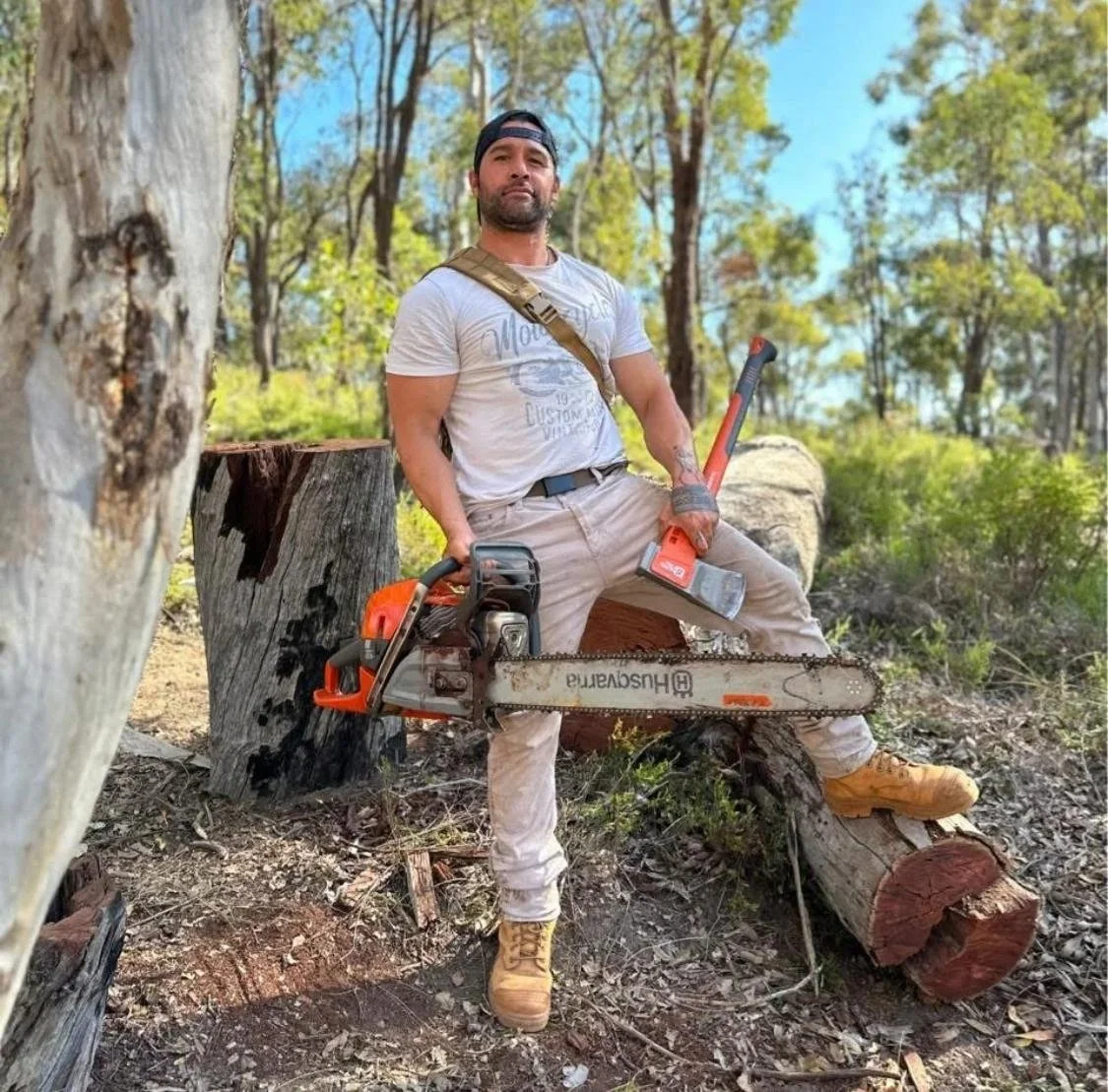The axe guy…
I’m Jared!
A few years ago, I found myself completely lost. I didn’t know what to do with my life.
I ended up relocating from the city to a friend’s beautiful farm, where there was an awesome old art studio turned cabin not far from the main house.
The cabin was incredibly basic, No TV, No bathroom, no toilet and no kitchen. The place just had a bed, a few power points, one cold water outdoor tap, and a fireplace. The cabin ran on solar power, and water was limited, so I had to be careful with every drop. The power points were just enough to run a kettle, a toaster a couple of lamps and to charge my phone.
As winter set in, I realized I had to start cutting firewood just to stay warm. There was no insulation, and the cold crept in fast. I borrowed an axe from a friend who lived nearby, but it was terrible — dull, unbalanced, and hard to use. I figured I’d look online to find a better one, maybe read some reviews to guide me.
To my surprise, there was nothing. No decent reviews, no comparisons, no breakdowns of axe types or what kinds of timber they’re suited for. Just the same generic tools from hardware stores, and that was supposed to be enough.
So, I took matters into my own hands.
I visited a local dealer and bought what were considered two of the best axes on the market. As soon as I started using them, I noticed a massive difference. The cutting power, the feel in the hand, the efficiency — it was like night and day. That’s when I began paying attention to the details: the shape of the axe head, the type of handle — timber vs composite — and how each one performed on different kinds of wood.
From there, it became a passion. I started buying and testing all kinds of axes. Splitting mauls, felling axes, you name it. I experimented with techniques and really studied how each tool interacted with softwoods, hardwoods, green wood, dry wood. I even joined the Progressive Axe Association here in Perth, WA, where I was trained in proper axemanship — the real techniques behind cutting wood. There’s an actual science to it. You can’t just buy a single axe and expect it to handle every kind of timber. That’s a mistake a lot of people make.
Before long, I found myself with about 10 different axes, each with a specific purpose. But even then, none of them were perfect — every axe had its limitations. That realization drove me to keep learning, keep testing, and keep refining.
Ironically, it was the act of splitting wood that helped pull me out of the darkness. It gave me structure. Purpose. There’s something incredibly primal and therapeutic about it — the focus, the physicality, the release of energy. It might sound barbaric, but it’s grounding. It calms the mind. Men have been splitting wood since the beginning of time, and for good reason. The axe is one of humanity’s oldest tools — and still one of the most powerful.
Now, I encourage other men to do the same. Pick up an axe. Get out there. Split some wood. It’s not just survival — it’s medicine for the mind.


